Asteroid belt
Contents
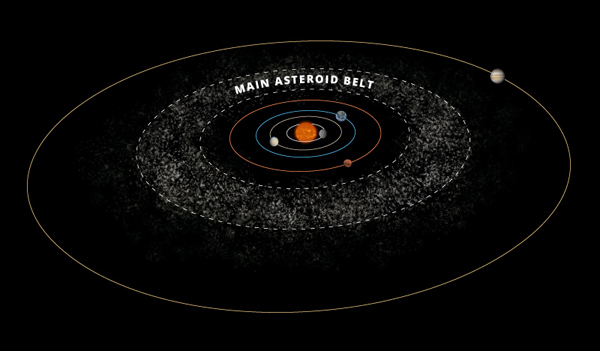 Asteroid Belt Illustration / laurinemoreau.com
Asteroid Belt Illustration / laurinemoreau.comAs everyone knows, our solar system's divided into three sections. The inner solar system (Mercury to Mars), the outer solar system (Jupiter to Neptune), and the Trans-Neptunian (beyond Neptune). However, not everyone knows that there is a physical "wall" that separates the inner and outer solar system that lies between Mars and Jupiter. This "barrier" is known as the asteroid belt.
Discovery
It was an Italian priest and astronomer Giuseppe Piazzi who discovered the asteroid belt, entirely by accident in 1801. His first discovery was Ceres, the largest asteroid in the belt, orbiting between Mars and Jupiter which led to closer observations by himself and other astronomers. This lead to the discovery of other asteroids and realization that there was a "belt" of asteroids in our system.
What is it?
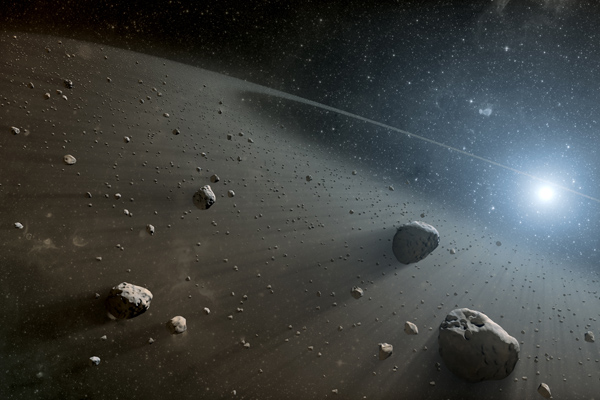 Artist's concept of Asteroid belt / nasa.gov
Artist's concept of Asteroid belt / nasa.govThe asteroid belt is a ring of asteroids that encircles the inner solar system around the sun. The asteroid belt formed from debris left over during the birth our solar system. Basically, they are the hunks of rock that did not get the chance to become part of or form a viable planet, the leftovers... if you will. Gravitational perturbations from Jupiter prevented these debris' from being able to form into planets and collisions between them were too violent for fusion so instead, they just broke apart into smaller pieces. As a result of the pull between Jupiter and Mars, these objects settled in an orbit between them creating a sort of divider between the inner and outer solar system.
Asteroid Types
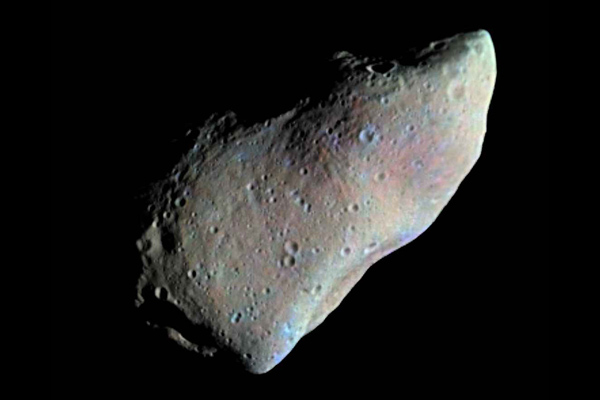 951 Gaspra, the first asteroid imaged by a spacecraft / solarviews.com
951 Gaspra, the first asteroid imaged by a spacecraft / solarviews.comThere are three types of asteroids that occupy the belt, C-type, S-type, and M-type. Although there are many other categories and subcategories of asteroid types, these are the three most commonly found within the belt.
C-type (carbonaceous) are carbon-rich asteroids that have slightly reddish hue but are very dark with a low albedo (reflective) surface. These asteroids take up most of the outer layer of the asteroid belt and are about 75% of the visible asteroids seen.
S-type (silicate) are silicate-rich asteroids and more commonly found in the inner part of the belt. S-type asteroids makeup about 17% of the belt and have a high albedo. They lack in the carbonaceous material that would have existed in primordial times most likely due to melting and reformation.
M-type (metal) are rich in metals, primarily iron-nickel, and take up about 10% of the belt. These may have been planetary cores that were beginning to form but never completed their development.
Activity
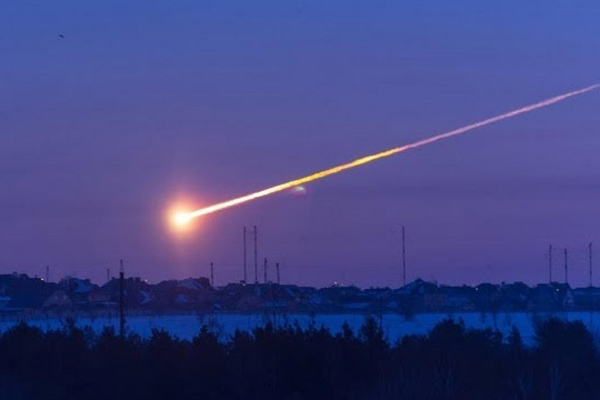 Chelyabinsk meteor (2013) originated from the asteroid belt / youtube.com
Chelyabinsk meteor (2013) originated from the asteroid belt / youtube.comAlthough the asteroids in the belt are thousands to millions of miles apart, collisions do occur. During these collisions, smaller pieces, called meteorites, break off and have a high chance of falling to Earth. 90% of the meteorites found on Earth originated from these collisions in the belt.
Largest Asteroids
The total mass of the asteroid belt equals to 2.8–3.2×1021 kilograms. However, there are four distinct objects within the belt that take up half of that; Ceres, Vesta, Pallas, and Hygiea. Here is a brief overview of these objects.
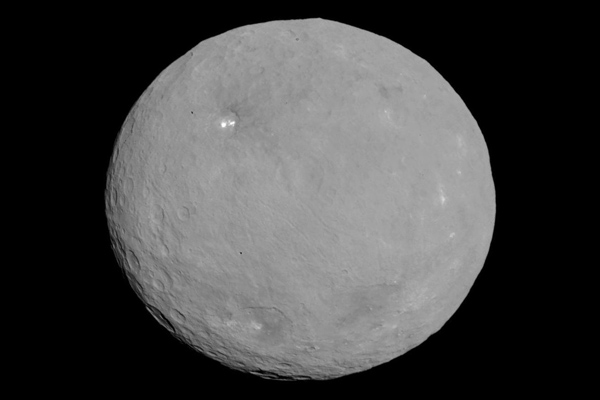 Ceres / nasa.gov
Ceres / nasa.govCeres — is still considered the largest asteroid, but is classified by the IAU (International Astronomical Union) classification rules it is a dwarf planet. However, its classification was never changed from asteroid and it is still referred to as one. Ceres takes up a third of the mass of the belt at 8.958×1020 kg.
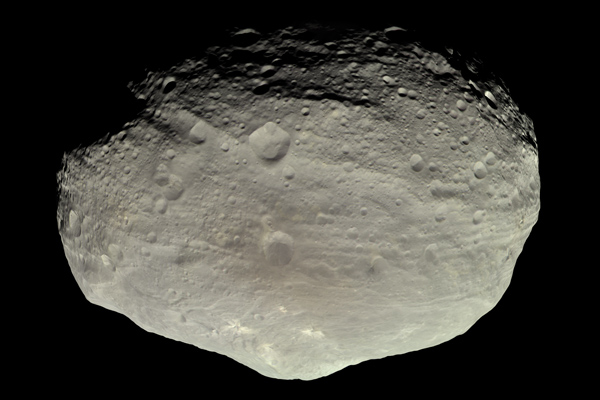 Color image of Vesta taken by Dawn / unmannedspaceflight.com
Color image of Vesta taken by Dawn / unmannedspaceflight.comVesta — is the second largest asteroid in the belt and the first object in the belt to have been visited by a spacecraft. At 2.67×1020 kilograms it is also one of the brightest asteroids in the belt with an albedo of 0.4322.
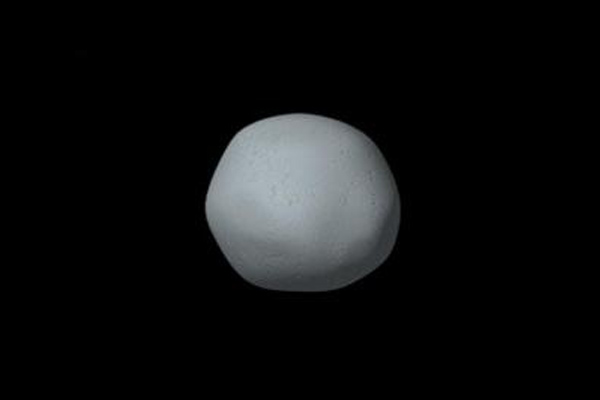 Model of the asteroid Pallas / nasa.gov
Model of the asteroid Pallas / nasa.govPallas — is what scientists refer to as a protoplanet. Basically, it is a planet that did not complete its formation. Pallas takes up 7% of the total mass of the belt at 2.108×1020 kg and is the third largest of the asteroids in the belt.
Hygiea — is the fourth largest asteroid in the belt at a mass of 8.67×1019 kg which is about 2.9% of the total mass of the belt. Hygiea is very dark due to its low albedo carbon-rich surface so though it is the fourth largest asteroid, it was only detected after several smaller, brighter asteroids were found.
Exploration
NASA's Galileo is the first spacecraft to get up close to the asteroids in the belt in 1991. It was also the one that first imaged an asteroid with a moon orbiting it in 1994. In 2001 NASA's NEAR spacecraft began studying Eros in the belt for a year. It was the first spacecraft to successful land on an asteroid though it was not designed to do so. This gave it the chance to explore closer into the surface, sending back large amounts of data for scientists to study and give us a better understanding of an asteroids composition.
In 2006, Hayabusa (Japan) was the first spacecraft to successfully land and launch from an asteroid, returning to Earth in 2010. It brought back with it samples of the asteroid which scientists are now studying for the possibility of future projects and missions into the belt.
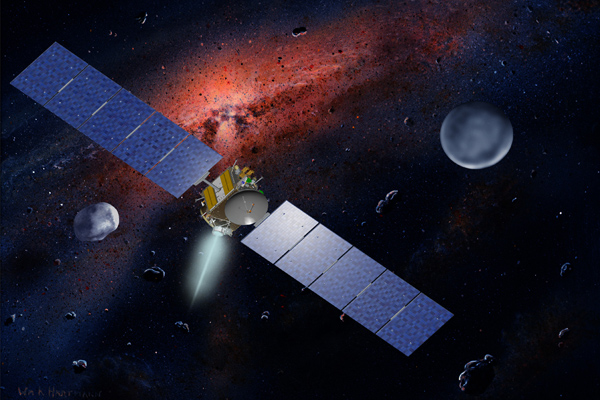 Artist's concept of the Dawn spacecraft with Vesta and Ceres / nasa.gov
Artist's concept of the Dawn spacecraft with Vesta and Ceres / nasa.govNASA's Dawn, launched in 2007, was on a mission to explore Vesta and Ceres, the two largest asteroids. Dawn reached Vesta in 2011 and Ceres in 2015 and has sent back data and images for scientists to research. Their research is mostly centered around gaining new insight into their design, but their studys also provide information on the resources that's available for us to exploit.
Resource corporations, such as Plantary Resource, Inc., already see the potential in mining these asteroids for resources. NASA has even begun exploring this idea and has presented many future missions to gather more results to begin plans for mining these resources. There have even been discussions about the Mars colony missions proposed for the future as a possible mining colony. Colonist on Mars would be close enough to the asteroid belt to begin surveying and mining the asteroids. In which case, our resources would come from off world means, preserving what little we have left here.
Video Gallery

-
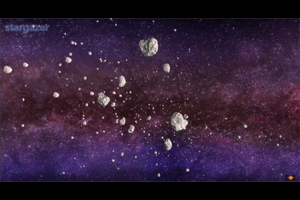 The Asteroid Belt
The Asteroid Belt
-
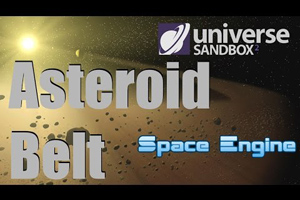 Asteroid Belt - Universe Sandbox 2
Asteroid Belt - Universe Sandbox 2
-
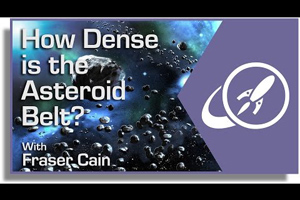 How Dense is the Asteroid Belt?
How Dense is the Asteroid Belt?
-
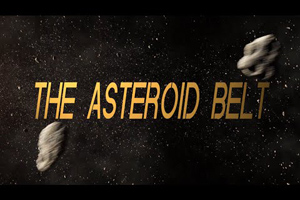 7 facts about: The Asteroid Belt
7 facts about: The Asteroid Belt